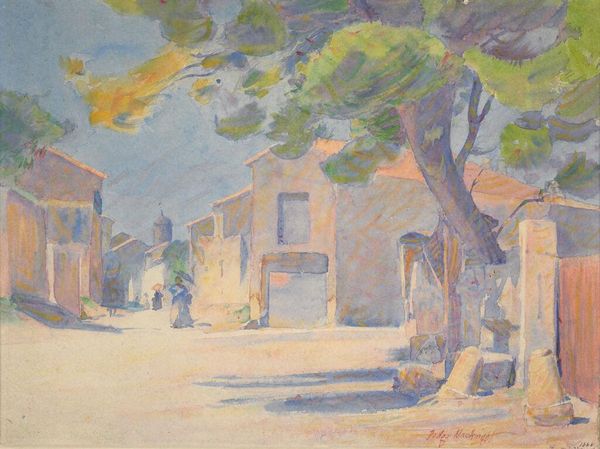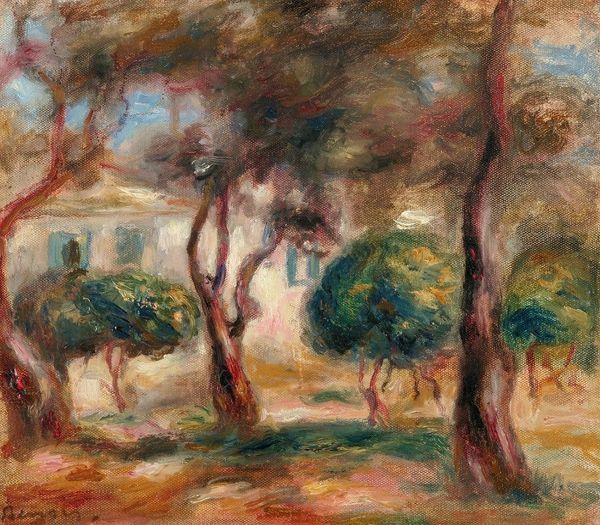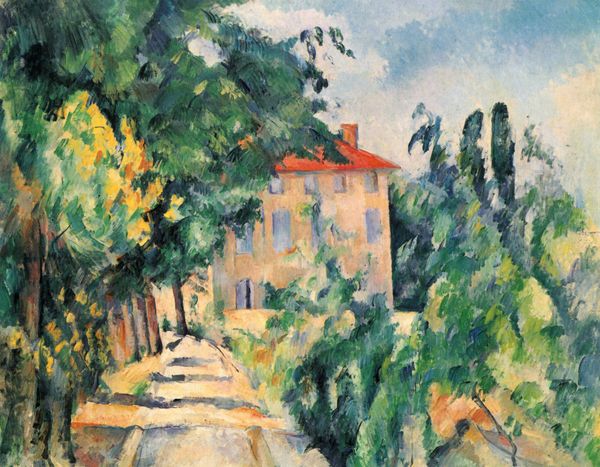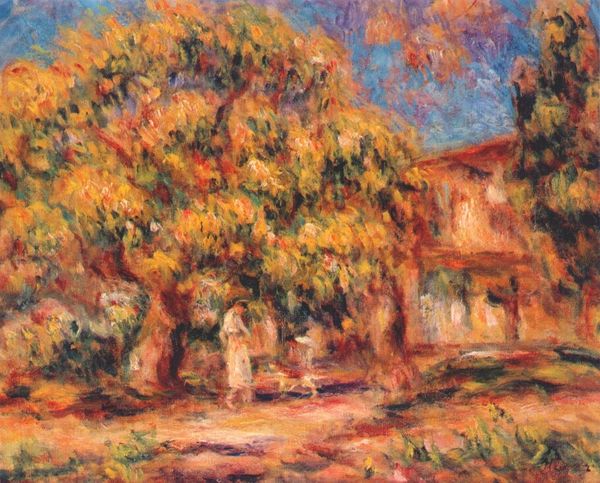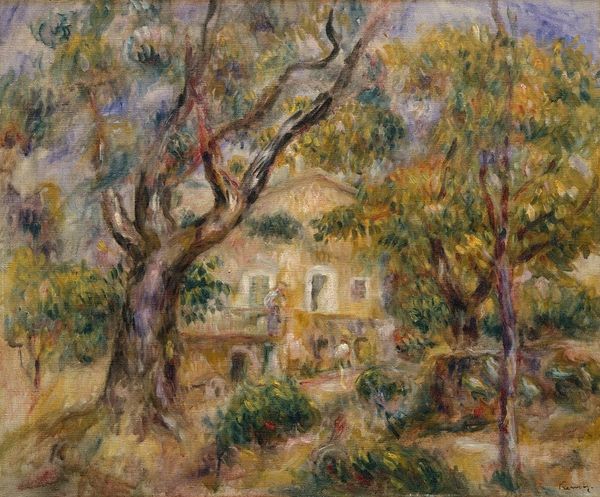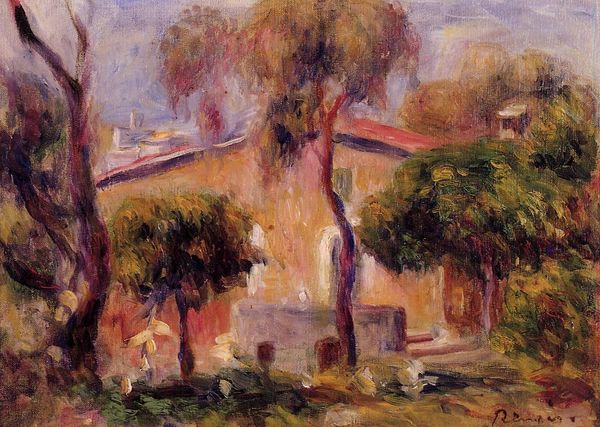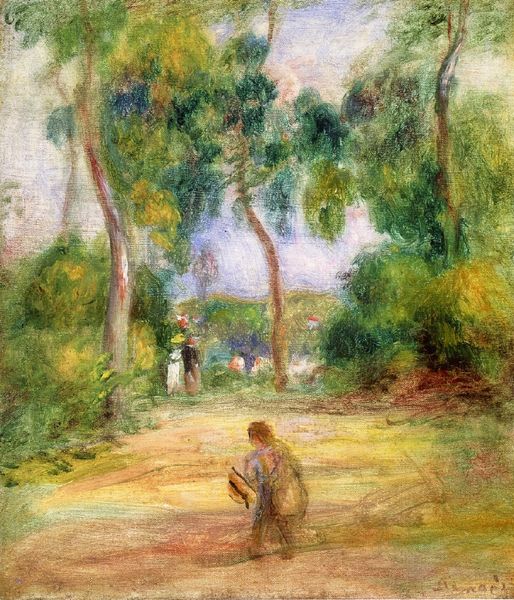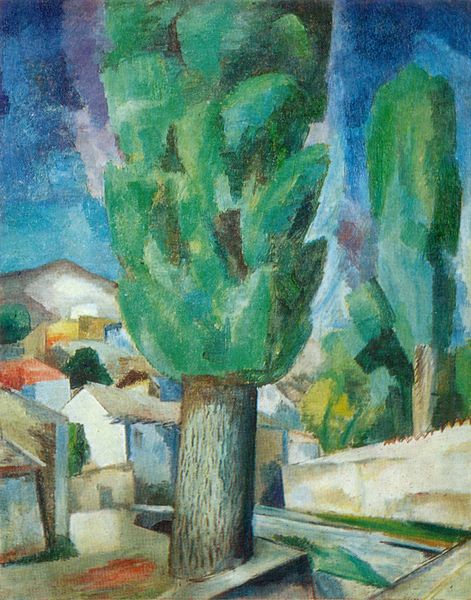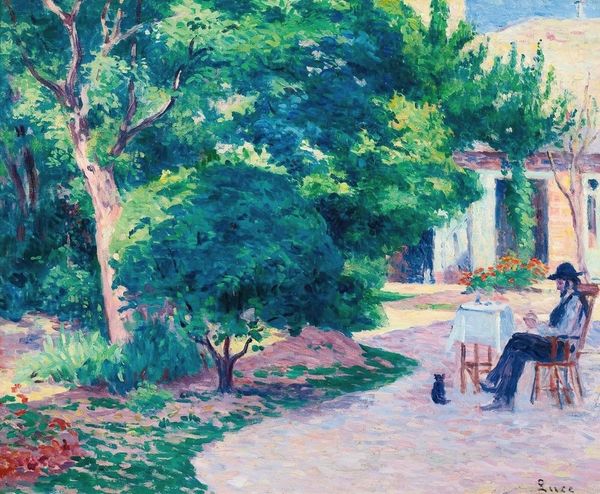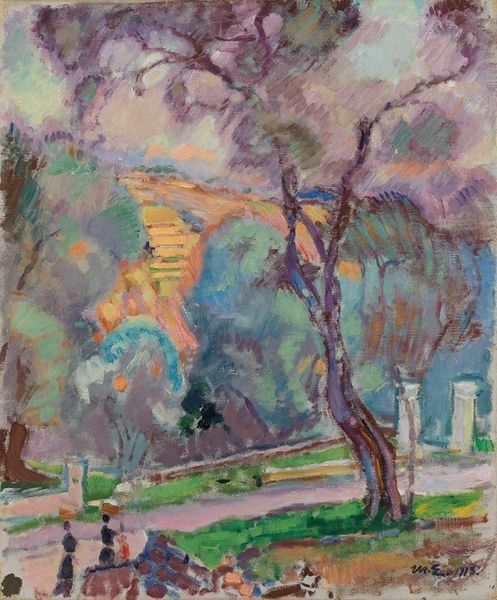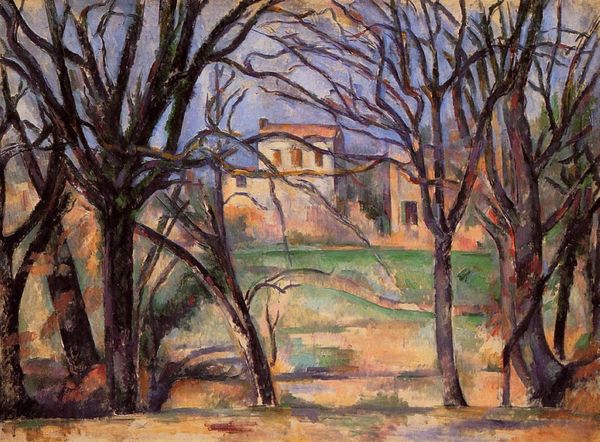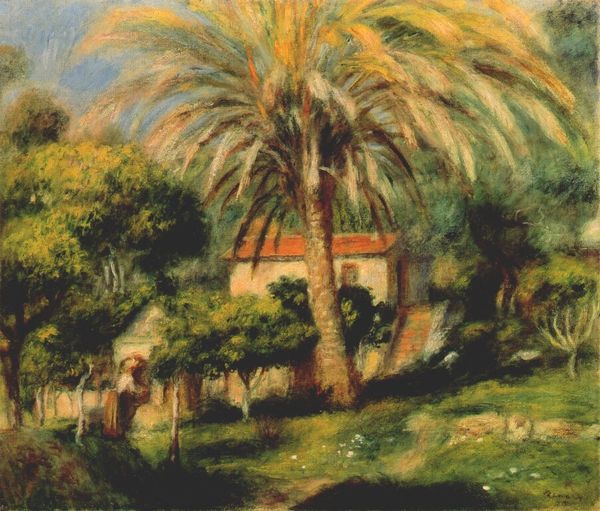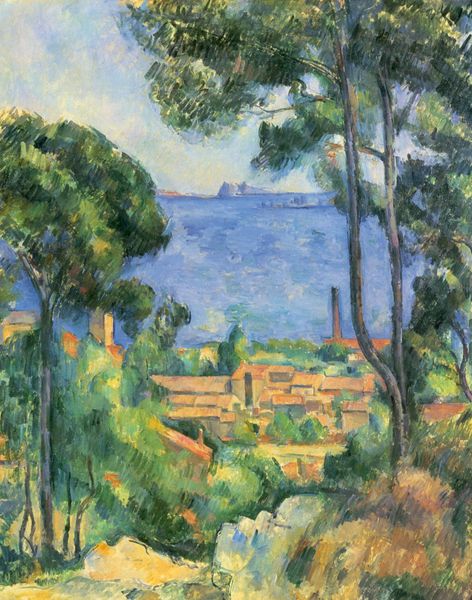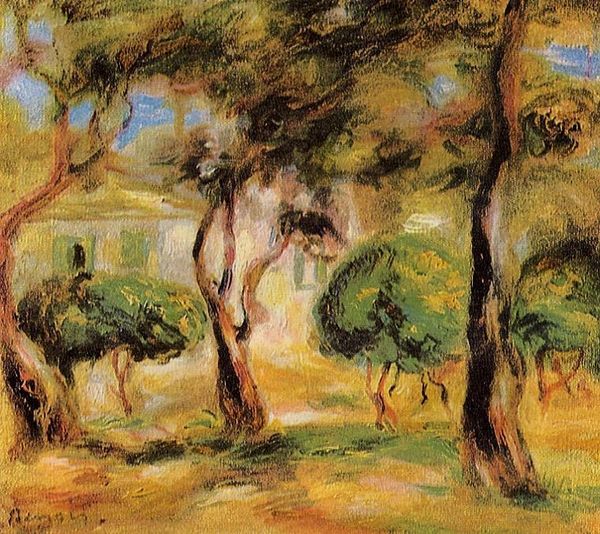
Copyright: Public domain
Editor: So, this is William James Glackens's "Bowlers, La Ciotat," painted around 1930, using oil paint, in what looks like a plein-air style. The scene feels so sun-drenched and leisurely. What strikes me most is the contrast between the somewhat hidden figures and the more openly depicted architecture and nature. What do you see in this piece? Curator: The enduring symbol of the game, of bowlers specifically, interests me. In the context of La Ciotat, and even more broadly the French Riviera, leisure takes on another dimension. Can you feel it, the almost utopian idea being transmitted to the canvas, evoking classical Arcadia, leisure that signals class and taste, both acquired? Editor: Definitely, I get that vibe. The attire, the way they carry themselves…it does hint at a certain societal class. Does the setting, La Ciotat, hold any significance in relation to this theme of leisure and class? Curator: Absolutely! La Ciotat, with its history as a shipbuilding town transforming into a resort destination, becomes a symbolic space for aspiration and transformation. The architecture—grand, yet softened by the Impressionistic brushstrokes—suggests stability, tradition. What’s interesting is to explore that contrast you pointed out earlier—the blending and almost submerging of the players in this scene of class ambition. Editor: It is interesting how they blend, yet are active at play, enjoying that upper-class leisure activity. I never would have noticed it if you hadn't pointed it out. Thank you. Curator: Indeed. It demonstrates how carefully encoded seemingly "simple" scenes are. Looking for symbols creates layers of understanding, creating resonance far beyond its painted surface.
Comments
No comments
Be the first to comment and join the conversation on the ultimate creative platform.
